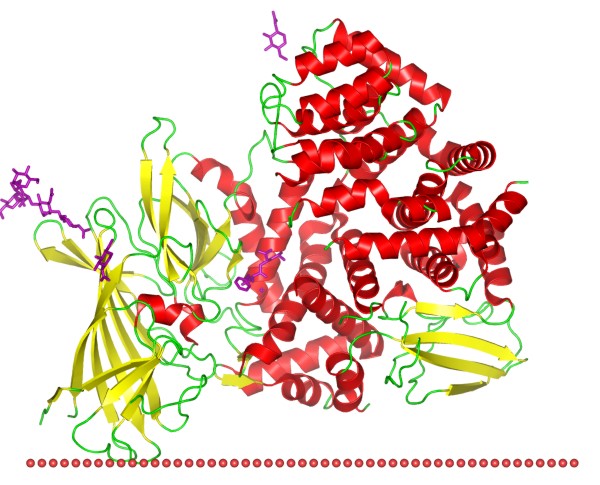Mempro™ Cell-Based Peptidase MA Production
Based on the comprehensive membrane protein production platform establised through years of experience, scientists from Creative Biostructure can provide custom Mempro™ peptidase MA production services using cell-based expression system.
Mempro™ cell-based protein production system is the most commonly used for membrane proteins production. So far, over fifty metallopeptidase families have been identified. Depending on the number of metal ions required for the catalysis, metallopeptidases can be divided into two classes: one class recruits only one metal ion for catalysis, while the other class, termed peptidase MA, needs to coordinate two metal ions. Peptidase MA superfamily belongs to a group of metallopeptidases that are hydrolases, of which the enzymatic mechanism is a divalent cation (usually zinc but may be cobalt, manganese or copper) activating the water molecule through the nucleophilic attack on a peptide bond. Peptidase MA is one of the two zinc-dependent metallopeptidases, containing the HEXXH motif with the two His residues as zinc ligands.
 Figure 1. Endoplasmic reticulum aminopeptidase 1, one member of Peptidase family M1. (OPM Database)
Figure 1. Endoplasmic reticulum aminopeptidase 1, one member of Peptidase family M1. (OPM Database)
Creative Biostructure can produce high quality peptidase MA, we can perform various strategies for Mempro™ cell-based protein production, including:
- Mempro™ Protein Production in Bacterial Cells System ;
- Mempro™ Protein Production in Yeast Cells System;
- Mempro™ Protein Production in Incest Cells System;
- Mempro™ Protein Production in Mammalian Cells System.
Escherichia coli (E. coli) is the powerful bacterial host for the production of peptidase MA. Yeast cells (such as saccharomyces cerevisiae and pichia pastoris) system, combines prokaryotic as well as eukaryotic characteristics. It is a perfect eukaryotic host owing to single cells, fast growth rates, inexpensive media, high cell densities. Insect cells (such as Sf9, Sf21 and High Five) are also the major system for peptidase MA expression, which are developed from transfected insect cells in combination with vectors derived from the baculovirus species AcMNPV. Mammalian cells present another eukaryotic system for peptidase MA expression, which provide near-native cell environment. Cell lines derived from COS, CHO, BHK-21, HEK293, HeLa and GH3 can be generally used for membrane protein expression.
With the Mempro™ cell-based protein production platform, Creative Biostructure is capable of expressing, isolating, purifying and crystallizing peptidase MA to facilitate the study of their physiological functions.
We provide other various Mempro™ membrane protein production services. Please feel free to contact us for a detailed quote.
References:
C. Trometer, and P. Falson (2010). Mammalian membrane protein expression in baculovirus-infected insect cells. Methods Mol. Biol., 601: 105-117.
F. Junge, et al. (2008) Large-scale production of functional membrane proteins. Cellular Mol. Life Sci., 65 (11): 1729-1755.
J. Petschnigg, et al. (2011). Using yeast as a model to study membrane proteins. Curr. Opin. Nephrol. Hypertens., 20(4): 425-432.
Peptidase M10, metallopeptidase. InterPro. (http://www.ebi.ac.uk/interpro/entry/IPR001818)
S. Schlegel, et al. (2013). Bacterial-based membrane protein production. Biochim. Biophys. Acta., 1843(8): 1739-1749.